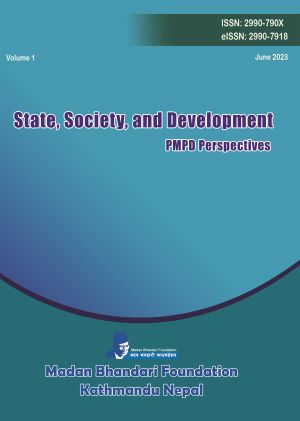Normative Theories of Mass Media: PMPD Perspective
DOI:
https://doi.org/10.3126/ssd.v1i1.58467Keywords:
People's Multiparty Democracy, Means of mental production, Dialectics, Multiparty competitive systemAbstract
In line with Marxist notions regarding the functioning of mass media, Madan Bhandari’s notion of People’s Multiparty Democracy (PMPD) deviates from the legacy of the Soviet communist theory of the press. Although Bhandari has not extensively expounded on media operations, his writings reflect a trajectory toward the establishment of a society built on freedom of expression. As the former Spokesperson and General Secretary of the Communist Party of Nepal (Unified Marxist-Leninist) (CPN [UML]), Bhandari’s ideas, thoughts, and aspirations resonated with the Nepali public following the People’s Movement of 1990. During this relatively brief period, Bhandari effectively communicated his message by incorporating elements of Marxism. Bhandari expressed himself through large-scale public gatherings, mass media interviews, and party documents, including the PMPD, which was overwhelmingly adopted by the Fifth National General Convention of the CPN (UML) in February 1993. This paper, employing qualitative and constructivist approaches, concludes that PMPD contains the seeds of a normative theory that envisions a free media environment conducive to plurality, as well as political competition that is both free and healthy in society. Bhandari consistently advocated for plurality and media.
Downloads
Downloads
Published
How to Cite
Issue
Section
License
Once published, an article in this Journal is not permitted to publish in other journals or similar publications without the permission of the Foundation. Contents and perspectives presented in the articles in the journal are solely of the authors.




